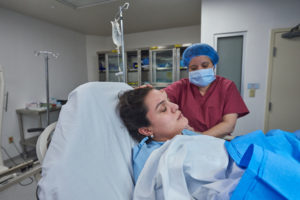
According to a landmark study published by researchers from the World Health Organization (WHO) and the University of Birmingham, a new solution, known as E-MOTIVE, could provide a major breakthrough in reducing deaths from childbirth-related bleeding.
The study, which involved over 200 000 women in four countries, found that objectively measuring blood loss using a simple, low-cost collection device called a ‘drape’ and bundling together WHO-recommended treatments – rather than offering them sequentially – resulted in dramatic improvements in outcomes for women. Severe bleeding – when a woman loses more than a liter of blood after birth – was reduced by 60%, and they were less likely to lose their life.
The recommended E-MOTIVE package includes early and accurate detection of postpartum hemorrhage (PPH) using a blood-collection drape. This is complemented by an immediate treatment bundle where indicated, including uterine massage, medicines to contract the womb and stop the bleeding, intravenous fluid administration, an examination and, when needed, escalation to advanced care.
The Center for Disease Control and Prevention (CDC) characterizes PPH as a severe bleeding by the mother after delivery, labels it a significant public health problem, and the leading cause of death among women during childbirth. Women with von Willebrand disease (VWD)–a hereditary bleeding disorder, caused by a deficiency in the levels and/or function of von Willebrand factor (VWF)–are more likely to experience PPH and are 10 times more likely to die from childbirth complications than women without VWD [source].
Read the full article here.
